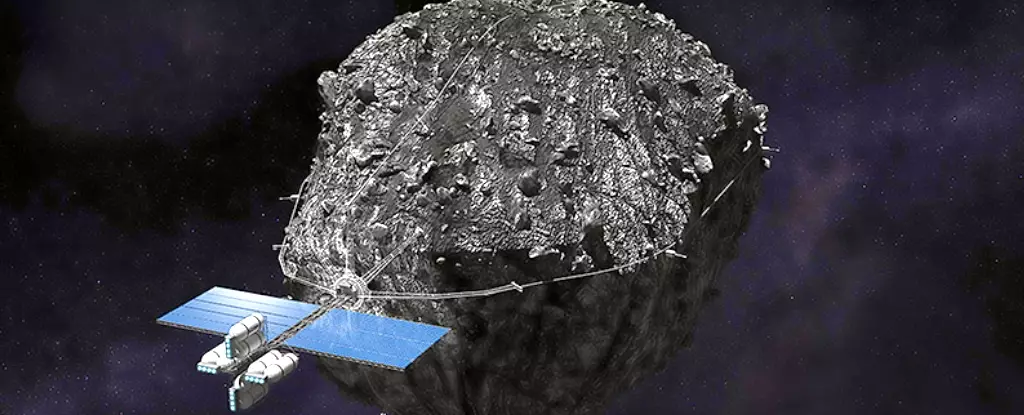Asteroid mining has recently captured the imagination of scientists, entrepreneurs, and the public alike, often amplified by sensationalized figures in popular media. Headlines tout missions to metallic asteroids, like Psyche in the asteroid belt, suggesting a cosmic treasure trove potentially worth astronomical sums—some estimates reach an eye-popping $10 quadrillion. But how legitimate are these valuations, and what is the basis for them? A comprehensive analysis sheds light on the metals residing in asteroids and challenges the simplistic strategies of calculating their worth.
Asteroids, remnants from the early solar system, contain a diverse array of elements and compounds. To evaluate them as mining targets, it’s crucial to categorize these metals within asteroids into two key groups: those of significant economic value for return to Earth and those predominantly useful for in-space applications.
Primarily, the metals classified as valuable for terrestrial use are known as platinum-group metals (PGMs). PGMs such as rhodium and palladium are indispensable in various modern technologies, including catalytic converters in automobiles—making them prime candidates for aspiration by miners. Conversely, metals such as iron, aluminum, and magnesium, while abundant and integral for space infrastructure, do not warrant shipping back to Earth due to their relatively low market prices.
The dilemma becomes apparent as asteroid miners propose approaches that could yield a sustainable market. High costs of transporting materials from Earth—estimated at around $10,000 per kilogram—pose significant barriers. In contrast, the low value of regular metals like iron at approximately $100 per kilogram leads to a paradox: space mining could be economically viable for some metals, but if there is no established demand, what justification exists for investing in extraction technologies?
Debunking Misconceptions on Asteroid Composition
One width of skepticism in asteroid mining arises from misconceptions about the makeup of asteroids. Previously, some asteroids were perceived as composed largely of pure metal, particularly metallic asteroids like Psyche. Recent studies suggest that this notion reflects an oversimplification and that asteroids are more variable in their compositions than once thought.
Research based on meteorite analysis—a terrestrial analog for asteroids—has revealed that while asteroids may not contain the expected concentrations of certain metals, they still hold reasonable quantities for extraction. A study evaluated the levels of 83 different elements in meteorite specimens and acknowledged that advanced analytical techniques are essential for understanding the chemical profiles of these space rocks. This contrasts with the limitations of remote sensing technology, which struggles to differentiate between similar elements.
The findings suggest that while the concentrations of PGMs may indeed be lower than previously assumed, they remain significantly higher than terrestrial counterparts. Particularly interesting is the discovery of refractory metal nuggets (RMNs), found primarily in L-type asteroids. These nuggets could possess a concentration of PGMs orders of magnitude greater than terrestrial ores, potentially shifting the economic equation for mining.
The Technical Challenges of Extraction
Beyond economic calculations resides a host of practical challenges inherent in asteroid mining. The processing of metals—especially those situated in their oxidized states—proves to be a formidable obstacle. Techniques such as molten regolith electrolysis require substantial energy inputs to liberate elemental metals, a task complicated by the necessity of first generating power from materials that are themselves scarce. This cyclical conundrum epitomizes the “chicken-and-egg” situation faced by space resource endeavors: substantial investments in mining technology hinge on the availability of affordable materials to build that very technology.
However, optimism is not unfounded. Companies like AstroForge aim to unravel these complexities and have invested in foundational research to advance capabilities in asteroid prospecting and processing. With planned missions to investigate near-Earth asteroids, these initiatives promise to refine our understanding of the mineral landscapes of our solar system.
While asteroid mining captures public imagination with extraordinary potential, we must approach these prospects with critical thinking. The initial allure of wealth from asteroids needs grounding in sober assessments of composition, economic viability, and technological needs. Until we can definitively establish a market for extraterrestrial materials and streamline their extraction, the lofty financial evaluations remain speculative.
Asteroid mining is far from being a futuristic gold rush. Still, it represents an exciting frontier in resource management and space exploration, with the potential to reshape not just our approach to resource scarcity on Earth, but also the way we build and maintain infrastructure in space. As this field evolves, continuous discourse on the scientific, logistical, and ethical implications surrounding this endeavor will be paramount, paving the way for a balanced perspective on our cosmic neighbor’s hidden riches.


Leave a Reply